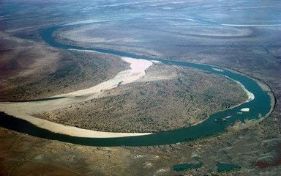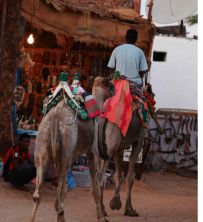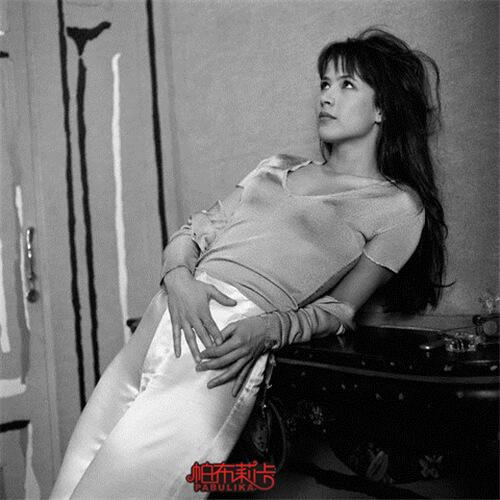Journey Up the Nile
沿尼罗河而上
(Excerpt 1)
(摘录1)
by Robert Caputo
罗伯特・卡普托
翻译:庄绎传
第一段:Egypt, wrote the Greek historian Hecataeus, is the gift of the Nile. No other country is so dependent on a single lifeline. Egypt’s very soil was born in the Nile’s annual flood: with the flood came the life-giving mud that made Egypt the granary of the ancient world. And as rain fell in the Ethiopian highlands and the snows melted in the Mountains of the Moon, the river was everlastingly renewed.
参考译文:希腊历史学家赫卡泰奥斯写道:埃及是尼罗河送来的礼物1。任何别的国家都不像埃及这样依赖着唯一的一条生命线。就连埃及的土地也是尼罗河每年泛滥而带来的2。河水泛滥带来了泥沙,万物得以生长,3埃及就这样成了古代世界的粮仓。埃塞俄比亚高原上的雨水,和月亮山上融化的积雪,为尼罗河提供了无穷无尽的水源4。

解说:
1. 译文在这里不便使用插入语,所以把“希腊历史学家赫卡泰奥斯”作为全句的主语。
★ 2. was born是一个形象性的说法,译文无法保存原文里的形象,所以译作“带来”。
3. Life-giving mud等于mud that gives life,所以译作“万物得以生长”。
4. 字面上的意思是“尼罗河不断得到更新”,这样说有些别扭。所以根据上下文,译作“为尼罗河提供了无穷无尽的水源”。
第二段:“This is the best place on earth, ” said Ahmed, an Egyptian fellah, or farmer, I encountered in the Nile Delta, that incredibly fertile 8,500-square-mile triangle between Cairo and the Mediterranean coast. The delta and the narrow Nile Valley to the south make up only 3 percent of Egypt’s land but are home to 96 percent of her population. Here nearly 48 million people live in an area only slightly larger than Maryland. The rest of Egypt is desert.
参考译文:“这是世界上最好的地方,”阿赫迈德对我说。他是我在尼罗河三角洲遇见的一位农民(当地人管农民叫“夫埃拉”)。从开罗到地中海之间这块八千五百平方英里的三角地带,土地异常肥沃。5三角洲和南边狭窄的尼罗河河谷只占埃及土地的百分之三,却有百分之九十六的人口住在这里6。将近四千八百万人生活的这块地方只比美国马里兰州7略大ー点。埃及其余的地方全是沙漠。
解说:
★ 5. 原文that incredibly fertile 8,500-square-mile triangle between Cairo and the Mediterranean coast是 the Nile Delta的同位语。在译文里“三角洲”一词不是出现在句子末尾,而是在句子中间。同位语不好安排,所以独立成句。
★ 6. are home to … 若译作“是……的家”则不顺。所以把名词改为动词,译作“……住在这里”。
★ 7. 本文发表在美国杂志上,所以用美国的一个州来作比较。中国读者不见得知道马里兰州在哪里,所以前面加了“美国”二字。
“Truly Allah has blessed us, ” Ahmed exclaimed piously. “Soil, water, sun-we can grow anything!”
参考译文:“真主可真是保佑我们哪,”阿赫迈德虔诚地说道。“我们有土地,有水,有阳光——种什么都行啊!”8
解说:
8. 这是埃及农民说的话,所以译文比较口语化。
第三段:In the gathering dusk Ahmed and his five companions had invited me to join them. Their galabias and turbans stained by the sweat and dirt of a long day’s work, they sat in front of a wayside shop, enjoying three of the best things in life along the Nile-tea, conversation, and the water pipe. At the edge of a nearby canal, donkeys laden with freshly harvested alfalfa waited for their masters to lead them home, braying a fretful counterpoint to the steady thud of an irrigation pump.
参考译文:天色渐渐暗了下来,阿赫迈德和五个一起干活的人早就约我去和他们玩儿。他们干了一天活儿,袍子和头巾上又是汗,又是土。9这时候,他们坐在路旁一家商店门口,享受尼罗河沿岸人们生活里的三件最大的乐事——喝茶、聊天、抽水烟10。在附近一条水渠旁,驴子背上驮着刚割的苜蓿,等着主人牵它们回家去,一面发出一阵阵急促的叫声,和浇地的水泵不断发出的突突声交织在一起。

解说:
9. 原文用的是独立结构,译文单独成句。第二句用“这时候”开始,照顾前后的联系。
10. 原文用了三个名词,表示两件东西,一件事情,非常筒洁。汉语如保持这种结构则不顺,所以都改成了动词。
第四段:All this suggested ancient harmonies. Yet the Nile has been changed by modern man in ways not yet fully understood. In 1971 engineers and workers completed the Aswan High Dam, nearly 600 miles upriver from Cairo toward the Sudanese frontier. It is the greatest public work to be undertaken in Egypt since the Pyramids. The devastating floods and droughts that imposed a recurrent tax of suffering on the fellahin no longer occur. Egyptian agriculture has been transformed, and industry is benefiting from power generated by the dam.
参考译文:这一切使人感到11古代的和谐气氛。然而现代的人却使尼罗河发生了变化,不过就连他们自己也不完全了解尼罗河究竟发生了什么变化12。1971年,技术人员和工人建成了阿斯旺高坝。这座水坝在从开罗沿尼罗河向苏丹边境走去将近六百英里远的地方。这是埃及自从修建金字塔以来进行的一项最大的公共工程。过去给农民带来灾难的水旱灾害,现在不再发生了。埃及的农业得到了改造13,工业也用上了水坝发出的电力。14
解说:
11. suggest在这里的意思相当于to imply,to show indirectly,所以译作“使人感到”。
12. in ways not yet fully understood原是一个状语,但若泽作“使尼罗河以尚不完全了解的方式发生了变化”,则很别扭,意思也不清楚。所以译作一个分句,仍放在后面。
13. 原文是被动语态,译文不一定用“被”字,所以译作“得到了改造”。
14. 照字面译就是“工业正从水坝发出的电力得到好处”。这里所谓“得到好处”,指的就是能够用上电力。直接译作“工业也用上了水坝发出的电力”,意思更清楚。
第五段:But there have been negative effects also. Standing on a sandy beach at the mouth of the Rosetta branch of the Nile, I was puzzled by what seemed a ghost town–a sad vista of crumbling buildings smashed windows, and broken wires dangling from utility poles. One house teetered drunkenly, half in, half out of the sea.
参考译文:但是也有不良的后果。洛塞塔河是尼罗河入海处的一个支流,我站在河口的沙滩上看到一个小镇,感到迷惑不解。15这仿佛是一个被人遗弃了的小镇,一片萧索景象,房子濒于倒塌,窗户破碎,断了的电线挂在电线杆子上。有一所房子好像喝醉了的人一样摇摇晃晃,一半泡在海里,一半在陆地上。
解说:
★ 15. 原文 standing后面有一个很长的状语,译文用了一个分句,放在前面,先处理,句子比较好安排。
第六段:Last summer, people stayed in those rooms-this was a summer resort. said a voice behind me. The speaker was a young Egyptian named Muhammad, member of a team from Alexandria that had come to this abandoned village to study coastal erosion. “Now the sea is moving in, ” Muhammad said. He pointed to a lighthouse perched on a tiny island a couple of miles offshore: “That lighthouse used to be on land. About six years ago it became an island. Day by day the sea is eating the land-the dam has stopped the sediment of the Nile from replenishing the shoreline.”
参考译文:“去年夏天,那所房子还有人住过。这是一个避暑胜地。”在我身后有人这样说道。说话的是一位埃及青年,名叫穆罕默德,他是一个考察队的队员,是专门从亚历山大港到这个荒芜的村庄来考察沿海地区水土流失的情况的。16 “海水越来越往里边来,”穆罕默德说道。他指着座落在离海岸二三英里的小岛上的一座灯塔说:“那座灯塔本来是在陆地上的。大约六年前,那地方变成了一个小岛。海水一天天冲刷陆地一一水坝已经使得尼罗河的泥沙无法沉积下来加固海岸了。
解说:
16. 原文 member of a team …是一个同位语,译文也用了个分句。
As we chatted, a brightly painted sardine boat dropped anchor. The captain came ashore and joined our conversation. “Before they started the High Dam 25 years ago, ” he said, “the Nile mud had a lot of food in it, and so the sardines gathered mouth of the river to feed. Now there is no mud, and no food for the fish-they’ve left us.”
参考译文:我们正在聊着,只见一条颜色鲜艳的捕捞沙丁鱼的船抛了锚。船长上了岸,凑过来和我们说话。他说:“二十五年前修建高坝之前,尼罗河的泥沙里面有很多可吃的东西,所以沙丁鱼就聚集在河口找食吃。现在泥沙没有了,鱼没有可吃的了,也就不来了。”

“ If all this can happen in 25 years, what will happen after 50 years, or 100 or 200? ” asked Muhammad.
参考译文:“如果说二十五年就发生这么多变化,五十年、一百年、二百年之后又会怎么样呢?”穆军默德问道。
(from National Geographic)
(摘译自《全国地理杂志》)
未经允许不得转载:帕布莉卡 » 庄绎传:沿尼罗河而上| CATTI -英语翻译文学-中英双语赏析
 帕布莉卡
帕布莉卡


 爱是一颗心遇到另一颗心(出处+配图)
爱是一颗心遇到另一颗心(出处+配图) 

